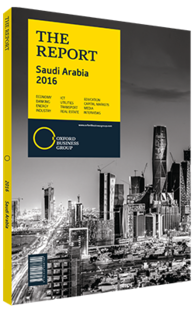Ahmed Alkholifey, Governor, Saudi Arabian Monetary Agency (SAMA), on lower oil prices and the Saudi economy: Viewpoint

Despite the decline in world oil prices and the slowdown in world economic growth, the Saudi economy in general, and the financial sector specifically, have remained in good shape. Real economic growth in 2015 was 3.5%, a slight decline from the 3.6% seen in 2014, but still a very good performance. This growth was balanced, with all sectors growing more than 2.5% year-on-year. The non-oil private sector in particular put in a solid performance, up 3.4% on 2014, marking the 28th year of consecutive growth for this important sector, which has grown faster than any other over the last three decades.
This performance occurred despite a 11.9% decline in government spending, which was in response to the sharp decline in government oil revenues. The resulting deficit was easily financed by utilising the state’s surplus balances with SAMA, combined with the issuance of government bonds for the first time since 2007. Even with the bonds, the total government debt at the end of 2015 was around 5.8% of total GDP, one of the lowest figures for any G20 country. The bonds were all sold domestically, and a more-than-ample amount of liquidity remains for the private sector’s financial needs.
In relation to living costs and inflation, there is some concern regarding the recent increase in the overall cost-of-living index, which grew by 4.3% in the first quarter of 2016 over the same period a year ago. However, this is not a major increase in the trend rate of inflation, since it was due almost entirely to increases in energy prices that were the result of subsidies on basic energy and water supplies being phased out. Rather, this increase is due to temporary factors and should not be considered an increase in general inflation, which is defined as a broad and pervasive increase in overall prices. It should also be noted that the overall index in May 2016 was only 4.1% higher than a year earlier, and posted a slight decline on the rate recorded in the first quarter. Therefore, we can say that there has been absolutely no feed-through of the higher energy prices into the general index.
It is true that domestic interest rates have risen in line with US rates. However, the increase has been very moderate, and rates remain well below those that prevailed before the financial crisis of 2008-09. Although market expectations are for a few more rounds of US rate rises, these are expected to remain moderate. Any impact of these higher rates on domestic borrowers can be offset by appropriate liquidity measures undertaken by SAMA. The low oil prices have resulted in a decline in the value of shares on the Saudi stock market, but the opening of the market to foreign investors should be a positive development for share prices. This should ensure that private sector capital costs remain reasonable. Saudi Arabia’s privatisation initiatives and enhancement of public-private partnerships will undoubtedly increase the demand for commercial banking services and lending activities.
The decline in government oil revenues has caused some concern within financial markets that the riyal peg with the dollar will be altered in some way in the future. This peg has remained unchanged for almost three decades and has served the Kingdom very well throughout different economic cycles. A dollar peg makes economic sense, since the vast majority of Saudi Arabia’s exports are either directly or effectively priced in dollars. Saudi Arabia successfully defended the peg in the late 1990s, when its foreign exchange reserves were considerably less than their current level. The combination of the state’s substantial liquid reserves with SAMA, its proven borrowing capacity and the steps it is taking to address the fiscal imbalances caused by low oil prices – all of these factors indicate that the government’s policies, including its exchange rate regime, have been wise and prudent.
You have reached the limit of premium articles you can view for free.
Choose from the options below to purchase print or digital editions of our Reports. You can also purchase a website subscription giving you unlimited access to all of our Reports online for 12 months.
If you have already purchased this Report or have a website subscription, please login to continue.

